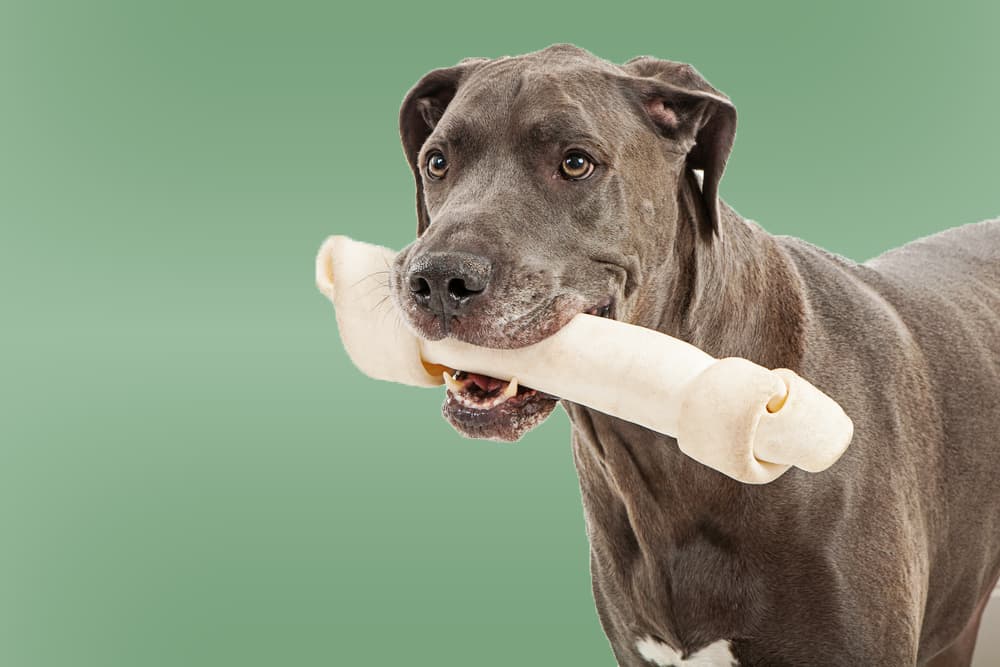
Hip Dysplasia

Our guide has been authored by qualified veterinarians, but should not be taken as substitute for medical advice or professional veterinary consultation. If your pet displays any unusual symptoms, we strongly advise seeking guidance from a veterinarian
Understanding Hip Dysplasia in dogs
Hip dysplasia in dogs is a common orthopedic condition, especially among medium and large breeds such as Labrador Retrievers and Golden Retrievers, but it can also afflict smaller dogs, such as Cavalier King Charles Spaniels and Pugs. It typically involves abnormal development of the hip joint, leading to instability and, subsequently, inflammation and chronic structural changes in the joint. In a healthy hip joint, the spherical head of the femur fits snugly into the hip socket. However, in dogs with hip dysplasia, there is no optimal fitting of the ball into the socket, which can lead to a loose and unstable joint or irregular bones rubbing against each other instead of moving smoothly.
Hip Dysplasia's Causes: Uncovering Triggers
- Genetics – In most cases, hip dysplasia has a strong genetic component.
- Nutrition – Rapid growth and improper nutrition during the early development of a dog may increase the risk of hip dysplasia. Excessive or deficient calorie intake and unbalanced nutrition can disrupt the supply of essential nutrients for joint development. Excessive weight gain can also exert additional pressure on developing joints.
- Intense physical activity – Activities like jumping or running on hard surfaces without gradual conditioning, especially in very young large breeds, may cause trauma and damage to hip joint development. On the other hand, lack of physical activity may also impair proper bone and soft tissue development in the same area.
- Factors affecting normal growth rate – For example, trauma at a young age. It has been found that spaying and neutering at an early age can also disrupt the growth rate, thereby affecting the proper development of the joint.
 Recognizing Hip Dysplasia: Signs and Symptoms
Recognizing Hip Dysplasia: Signs and Symptoms
- Limping or difficulty walking: Obvious limping, preference for one of the hind legs, difficulty getting up, climbing stairs, or jumping. Classic limps usually appear after a long rest or after vigorous physical activity.
- Decrease in overall activity level: Difficulty keeping up with pace, tendency to tire easily, and reluctance or refusal to do activities they previously enjoyed.
- Decreased range of motion and stiffness: Difficulty extending or flexing the hind legs fully, difficulty getting up after prolonged lying down.
- Rabbit hopping gait: Some dogs may hop like rabbits, with both hind legs moving together, similar to hopping instead of walking.
- Pain or discomfort in the hip area: Whimpering, withdrawal upon touch, or aggression when touched around the hips.
- Muscle atrophy: Over time, the muscles around the hip joint may weaken and atrophy due to reduced use and limited mobility. This can lead to a noticeable loss of muscle mass in the rear.
The signs in this case will vary depending on the severity of the condition.
 Hip Dysplasia Diagnosis: How it's Identified
Hip Dysplasia Diagnosis: How it's Identified
The initial suspicion usually arises after a medical history review and noting all visible signs. Your veterinarian may also ask you to film the limping at home if not visible at the clinic. The veterinarian will perform a physical examination of the hind limbs and, especially, the hip joints to check for abnormalities, such as instability, pain, or restricted range of motion. From there, they will proceed to sedated orthopedic tests – performing manipulations that demonstrate laxity of the hip joint (Ortolani test) and precise X-rays, which are difficult to perform in an awake dog due to the intensity of the pain and resistance. It may also be necessary to aspirate joint fluid to determine if there is inflammation or infection. In rare cases, more advanced imaging such as CT and MRI may be required.
 Treating Hip Dysplasia: Options and Approaches
Treating Hip Dysplasia: Options and Approaches
Maintain proper weight and regular moderate physical activity – to prevent joint injury.
Nutrition – In addition to nutritional supplements or medical foods containing essential nutrients such as omega-3, glucosamine, and chondroitin, they support joint health and inhibit the process of osteoarthritis.
Medical treatment – anti-inflammatory drugs for pain treatment and medications for nerve pain suppression originating in the affected area.
Physiotherapy and hydrotherapy – therapeutic exercises and various massage techniques can help strengthen muscles, improve joint stability, provide pain relief, and improve mobility.
Platelet-Rich Plasma Treatment – using the patient’s own blood cells to heal damaged tissues.
Surgical intervention- in more severe cases or when conservative treatment is insufficient, there are four possible surgical procedures:
-
- Femoral head and neck excision (FHO) – more effective in smaller and relatively young breeds.
- Total hip replacement (THR) – removal of the ball and its replacement with an artificial ball to stabilize the joint.
- Triple pelvic osteotomy (TPO) – a complex surgical procedure usually performed on very young dogs to correct the position of the joint by surgically altering the shape of the pelvis.
- Juvenile pubic symphysiodesis (JPS) – a highly effective and less invasive procedure that can only be performed up to 4 months of age.
Hip Dysplasia: Surprising Facts

Regular and controlled physical activity such as swimming or walking can help strengthen the muscles around the hip joint.

In most cases, puppies are born with normal hips - the dysplasia development process begins shortly after birth when the cartilage turns into bone. The most critical period for growth is up to 8 weeks of age, so it’s important during this time not to overfeed and not to engage in excessive physical activity.

Hip dysplasia is more common in certain breeds, indicating a genetic component to the disorder.
 Vet's Tip: Dealing with Hip Dysplasia
Vet's Tip: Dealing with Hip Dysplasia
When it comes to purebred dogs, especially large ones, it’s always advisable to turn to reputable breeders approved by the breed club. These breeders perform routine hip X-rays for their breeding dogs to prevent the phenomenon as much as possible among their offspring. You can also request a special certificate confirming this. However, it is important to note that the problem is not always limited to purebred dogs and is also very common in mixed-breed dogs.




Price Tag

Latest in Research and Treatments
As you may have already understood, quite a lot. In the therapeutic aspect, a new family of drugs can help reduce pain by injecting once every few weeks without side effects. In terms of rehabilitation, there has been significant specialization in the field of physiotherapy and hydrotherapy, which greatly assists in the recovery and care of dogs suffering from this problem.
dogs breeds Prone to Hip Dysplasia
Did you know?
Enrolling in Animalia Pet Insurance
while your pet is healthy is a wise decision.
Waiting until a disease develops means it won't be covered.














